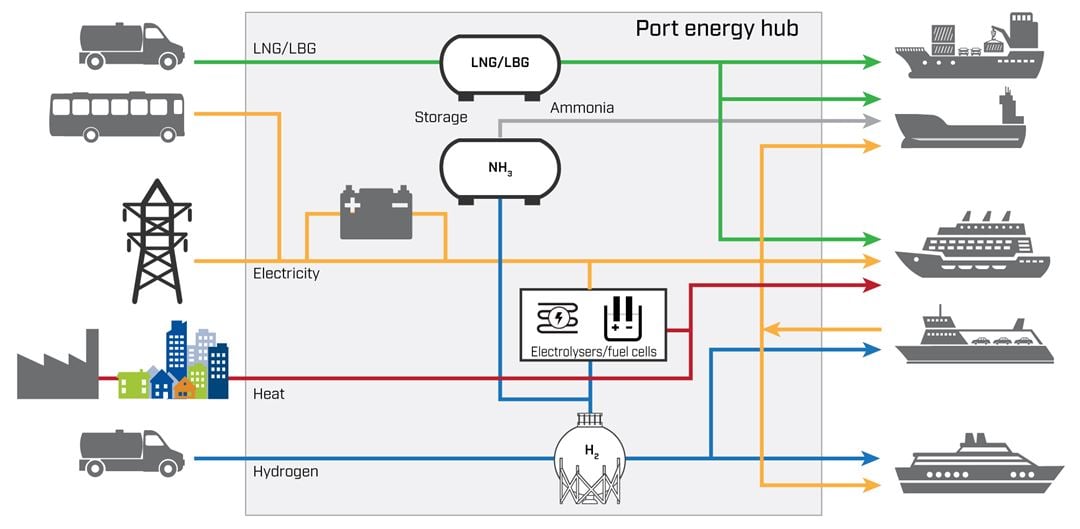Norway’s National Transport Plan (NTP) envisions ports as zero-emission energy hubs, with the infrastructure to provide a mix of energy carriers (such as on-short power, hydrogen-based fuels and biofuels) to ships and vessels. Ports have also been highlighted by Norway’s climate action plan as key players in the decarbonisation of the transport sector, particularly maritime transport.
INTERPORT considers ports, its users (e.g. ships, logistics, land-based transport) and its surroundings (e.g. industries and buildings) as one integrated energy system, and assesses synergies between local production, conversation, storage and supply of low-carbon fuels, electricity and thermal energy. In this system, the optimal energy carrier is supplied to different end users, depending on cost- and energy-efficiency, safety and reliability. This enables ports and authorities to increase the robustness and flexibility of the energy system, and accelerate the uptake of low-carbon fuels.

INTERPORT considers interactions between actors, institutions and technologies by combining techno-economic and socio-technical perspectives. This includes assessments of framework conditions, policies and regulations, and their impact on future energy demands. New business models are explored to create value for ports and energy providers, without an increased cost for energy end users.
INTERPORT’s ambition is to accelerate the transition towards climate and environmentally friendly ports and maritime operations by developing and facilitating solutions for the uptake and use of alternative fuels and energy carriers. The aim is to reduce the carbon footprint in port areas by at least 50 % in 2030 and 100 % in 2050, including ship fuelling and charging.

